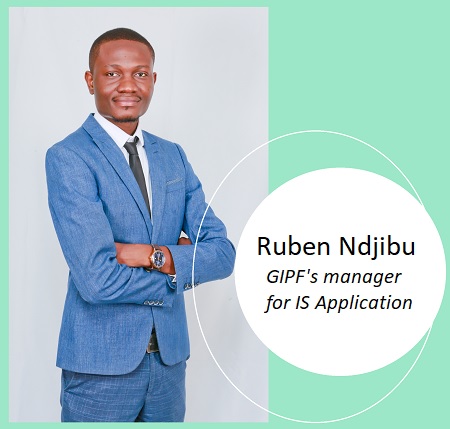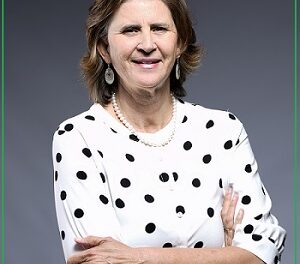
Digital Transformation of the Pension Industry
By Ruben Ndjibu |
The digital transformation of customer experiences and the impact on the interactions between the pension industries and customers, presents arguably one of the greatest evolution in the pension industry for some time.
Many pension funds have implemented their systems in the late ’90s or early 2000s and many of those legacy systems are still being used.
In this fast-evolving Information Technology and digital world that we live in, pension funds like any other industries, must keep pace with the rising expectations of information technology and digital transformation. This is to diversify the experiences and access of the pension services to members.
The lockdowns and remote working arrangements have exposed the shortcomings of the legacy systems, data security, privacy and remote access. Legacy systems are all hot topics and issues that are of high importance not only to members, but to boards and various stakeholders.
With more than 104 000 active members, 40000 annuitants, 270 employees and more than 670 service providers, the GIPF is arguably one of the biggest pension fund in the country that provides daily pension related services and significant contributions to the socio-economic developments of the country.
The GIPF Information Technology eco-system like many other pension funds comprises of legacy systems and other technology systems that are integrated to provide pension and other business services to members of GIPF.
One of the most observable impacts in recent times is the GIPF Five (5) year Information System strategic plan, which plans to reform the GIPF Information Technology eco-system and enables digital transformation of the business through personalised, multi-channel and ultra-convenience technology solution similarly to shopping, banking and everyday online services with own devices or technology preferences.
To encourage innovation and technological self-reliance, the implementation of the GIPF Information System strategic plan identified five key goals aimed at implementing necessary frameworks for technology innovation and excellence in the Fund, namely:
- Information Systems Governance Enhancement
- Infrastructure and Architecture Management
- Digital Transformation
- Information Systems Continuous Improvement
- High-performance Information Systems Workforce
In order to advance the mandate of the Fund, several initiatives are developed and implemented over a five-year strategic period between 2018 to 2023. While the GIPF journey to digital transformation is still a work in progress, many initiatives have been accomplishment so far along the journey.
One of the impactful initiatives, is the project to upgrade the GIPF IT infrastructure and architecture management solutions.
The project was completed in 2019 and was aimed at reforming the GIPF information system infrastructure and architecture management solutions from legacy to advanced digital IT infrastructure to maximise the performance of the GIPF IT infrastructures and to promote alignment, standardisation, reuse of IS assets as well as to strengthen the resilience of cybersecurity attacks on the GIPF IT eco-system.
The successful delivery of the project has enabled a smooth transformation of the GIPF into a new digital age, with benefits such as fast internet and network connectivity, secured controlled local and remote working environments, collaborations, video conferencing platforms and advanced infrastructures for excellence innovation and development.
Another impactful initiative is the successful implementation of the GIPF Service Oriented Architecture (SOA) to enable interoperability and sharing of uniform data across the GIPF systems including legacy systems.
The successful implementation of the GIPF SOA has enabled the Fund to invest and deploy robust technology solutions that are able to support and transform the experiences of the legacy systems.
To date, the SOA has assisted the GIPF to deploy newer robust solutions, such as the Document Management Systems, Enterprise Software Solution, GIPF Member Portal, SMS and Email solutions, Integrated Bank Payment and Reconciliation Systems, which are all contributing to the improved member experiences.
Furthermore, the SOA has allowed the GIPF to invest into technology projects such as: GIPF Biometric Systems Development, GIPF Mobile app and other disposable technology solutions.
As the Fund is expanding and transforming digitally, the usage of technology has already become an integral component of its operations, enabling connections and interactions from diverse environments and locations.
In line with best information systems governance practices, the GIPF Board of Trustees has recognised the substance of a formal governance framework and has adopted an Information System Governance Framework, COBIT 5. This framework incorporates people, processes and technology; which reflects the central role of the information systems in creating shared-value for the GIPF. Having adopted COBIT 5, GIPF has further adapted and prioritized 11 of the 37 processes during the five-year GIPF Information System strategic plan, as crucial to achieving its corporate objectives.
In ensuring effective and efficient implementation of the GIPF enterprise IT governance and maintenance of the its IT eco-system, the Fund has prioritised the initiative to expand the Information System IT governance structure as well as the reinforcement of the Information Systems Department.
The implementation of the GIPF IT governance structure has allowed the GIPF to identity and implement a skillful workforce that is able to accelerate the development of IT skills and knowledge across the Fund; and further, to execute and support the development of the GIPF strategic goals towards Digital transformation and excellent customer service.
The Digital transformation of the pension industry is driven by the mind-set and acceptance of IT services as critical tools and enablers to unlock digital transformation within business units. Digital transformation evolves around the usage of technology to radically improve the performance and service delivery to members and stakeholders. The goal is to provide opportunities for members to access services anywhere.
The GIPF alongside its partners are rethinking technology and processes and challenging the status quo. The Fund knows that the journey to Digital Transformation require increased technical capabilities, expansion of technology services and management of information to enhance technology presence.
It also means aiding and augmenting decision-making processes and delivering these services in a manner that protects the privacy and security of every member and stakeholder of the Fund.
The digital efficiencies cannot be achieved without a strong organisational commitment and focus towards becoming ‘digital by default’.
— Ruben Ndjibu is GIPF’s manager for Information Systems Application.






